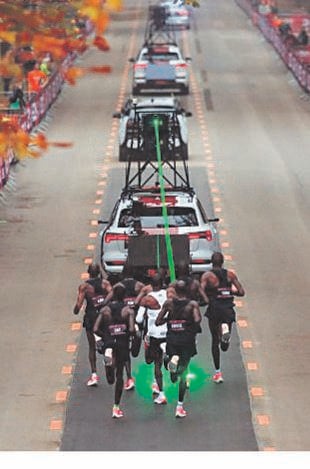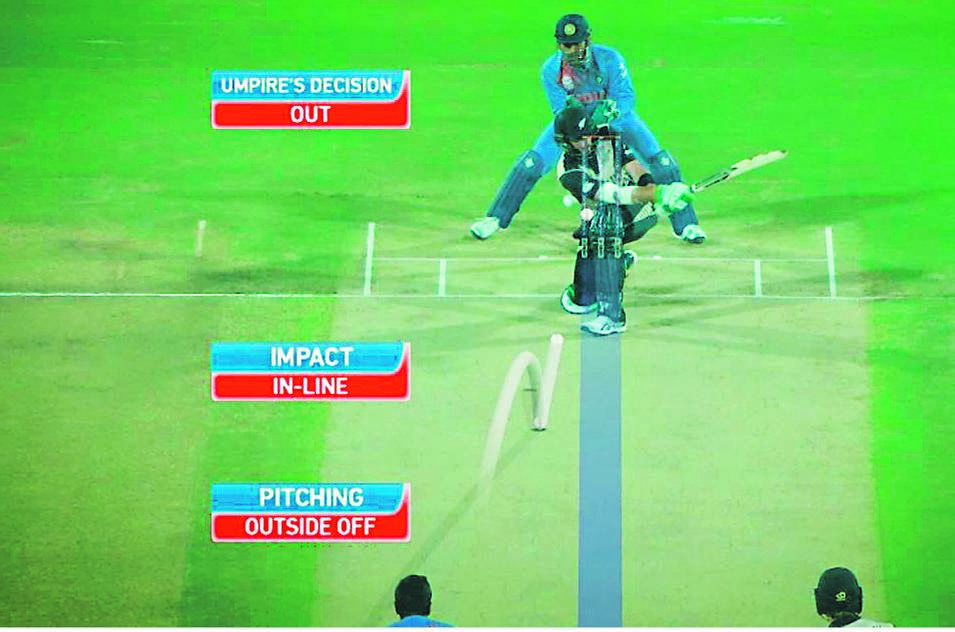
The ubiquitous nature of technology in everyday menial tasks has reached a stage where professional sports in the past decade have been forced to use them in their coliseums of excellence.
From the DRS – decision review system, the VAR – video assistant referee, and the TMO – television match official, the beauty of adjudicating the validity of human achievements is not left to the eye of mere mortals, but confirmed through a web of algorithms, an array of cameras and the swiftness of communicating with off-field officials.
This has not stopped the debates, the controversies or the boundless emotion that is experienced and expressed viscerally in the formation of conclusive decisions.
Cricket launched its DRS in 2008 for test cricket, for one-day cricket in 2011 and for T20 cricket in 2017, with the game having found a use for technology since 2001 in the form of replays to decide on certain decisions that umpires needed to make.
Football began using goal-line technology in 2012 before it trialled its VAR in 2016 and officially endorsed it at last year’s World Cup in Russia.
Rugby began its filtration with video replays in 2000 and endorsed a basic TMO in 2001 and this decade expanded that to ref cam in 2012 and hawk-eye, complete with slow-motion replays and multi-angle cameras, last year.
Of South Africa’s three most popular sports, only two review systems are in use, with football taking the wait-and-see option for now.
Around the world, many professional sports have been using technology to enhance their officials’ decision-making since the early 1990s. US football (National Football League) allowed some form of replay technology from 1985 and horse racing used some form of photography in photo finishes in the early 1900s. Athletics saw the light in the 1930s with the first photo finish in a 100m race at the Los Angles Olympic Games.
However, it has been only in the past decade that the proliferation of technology has seeped into nearly all professional sports in some way, shape or form.
Ice hockey, handball, hockey, baseball, volleyball have added in some form of review systems this decade with tennis employing hawk-eye since 2002.
The onset of the all-seeing eye brings about another set of challenges; at what point does the use of technology for making definitive decisions destroy the spirit of the game?
Mistakes have been made and will be made and if technology can’t eliminate them, then what’s the point? Yet, as many proponents have suggested, it’s not about completely eliminating mistakes but rather making fairer, more-unbiased decisions.
Beyond the field of play, virtual reality and cloud technology have allowed teams and individual athletes to track their movements, check vital signs and measure performance to within centimetres.
Eliud Kipchoge’s sub two-hour marathon run showed how using technology to precisely measure how fast you need to run and where you need to be performance-wise to push the bounds of human potential.
Cloud technology, GPS tracking, ball tracking and data analytics have spurred on trainers and coaches to find the slightest competitive advantage for athletes.
England’s Garreth Southgate used data analytics and video analysis to train his men for penalty shootouts, breaking the seven-shootout loss streak that stood for 22 years. At the Africa Cup of Nations, Bafana Bafana used GPS wearable technology to measure certain metrics, such as the distance run, workload and vital signs. Superslow-motion and algorithmic software has been used to correct and tweak batsman’s techniques for a more-effective run scoring.
Formula One is constantly in a state of flux regarding technology with new rules and minor changes announced almost every season and cars upgraded (or downgraded) to balance their many competing factors. This inevitably led to the arrival of Formula E in 2014 – similar to Formula One but with electric cars.
 |
| ||||||||||||
| |||||||||||||




 Publications
Publications
 Partners
Partners










